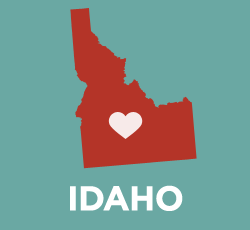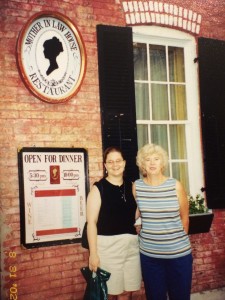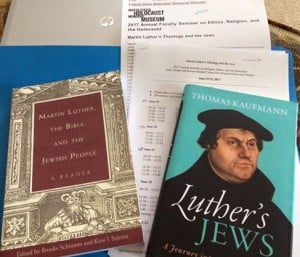 Marriage equality has come to Idaho. Idaho!
Marriage equality has come to Idaho. Idaho!
Of course the big news is the fact that gay and lesbian Americans now have the right to marry in 32 states, a majority for the first time in U.S. history.
But I have a small story to share about one place, one courthouse.
My husband grew up in American Falls, Idaho, which is in Power County in the southeastern part of the state. The population of the town is about 4,000, and the entire county is less than 8,000 people. It’s a rural potato farming culture, with the Snake River running through it and a growing population of Hispanic workers. The first time I visited, twenty-one years ago, Mark took me to see the American Falls reservoir and the dam creating it which was built in 1927. He still loves to point to the grain elevator that pokes out of the reservoir, reminiscent of the old town of American Falls that was intentionally flooded and moved to higher ground with the construction of the dam. The level of the reservoir changes dramatically every year, given the demand for irrigation of local farms. And while the name of the county originally was inspired by the electricity generated by the dam, it now inspires the expansion of wind farms with dozens and dozens of spinning turbines lining the rolling foothills along Interstate 84.
It’s also a conservative place that was part of Mormon pioneer settlements in the 19th century, where the LDS population is growing every year. It’s really one of the last places you’d expect to see marriage equality become reality. Indeed the governor and others worked hard to prevent it from happening, challenging legal decisions, getting stays and delays until this fall:
The 9th Circuit ruling was issued on October 7, affirming the freedom to marry for same-sex couples. The ruling was an affirmation of a May 13 federal ruling in Latta v. Otter, which struck down the state’s anti-marriage constitutional amendment. The lawsuit argued that laws in Idaho that restrict marriage to different-sex couples and refuse to respect legal marriages of same-sex couples who married in other states violate the United States Constitution’s commitment to equal protection and due process.
And so gay marriage comes to Idaho. My mother-in-law is the County Deputy Clerk in Power County, and she recently issued the first same-sex marriage license in the county’s history. I asked her a few questions, starting with what it was like for her and her coworkers to be part of that moment:
We were all excited to finally be able to issue a same sex marriage license to two women. We happened to know one of them, so we were all congratulating both of them.
How had your office made preparations for the changes in state marriage laws?
We made preparations by having our computer techs change the marriage license affidavit to accommodate same sex marriages. They could just choose applicant, or 2 brides or 2 grooms, or bride and groom. The State of Idaho Vital Statistics accepts these marriage licenses now.
How did delays or stays on various legal decisions affect what your office was or wasn’t able to do?
We had to answer phone calls and say that we couldn’t issue same sex marriage licenses after all, because of the court stays. We felt bad.
You’ve worked in the county courthouse for a long time … did you ever imagine that a change like this, to open up marriage to all of the residents of Idaho regardless of gender, would be something that you’d be a part of?
I have worked for the County 24 years. I never imagined that marriage licenses would be opened up to all residents of Idaho regardless of gender. I never imagined that I would be part of this.
Any other thoughts on this you’d like to share?
Years ago I was against this, until I realized that everyone had rights, regardless of gender. And when two people love each other, what right do I have to tell them that they have no right to be together?
It’s a great question. One that I hope more people will take to heart.
And if marriage equality ever comes to South Dakota, my home state, I’m sure I’ll have some more stories to tell.












